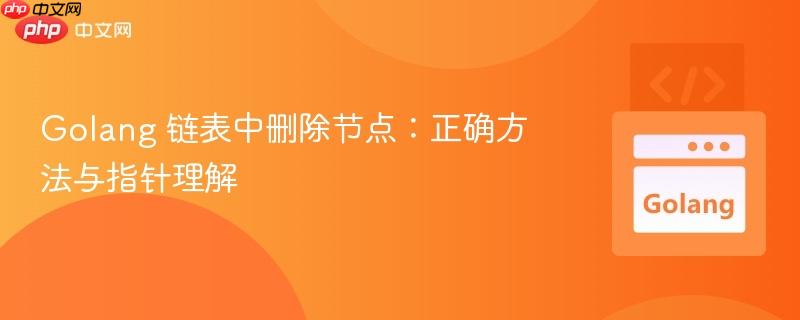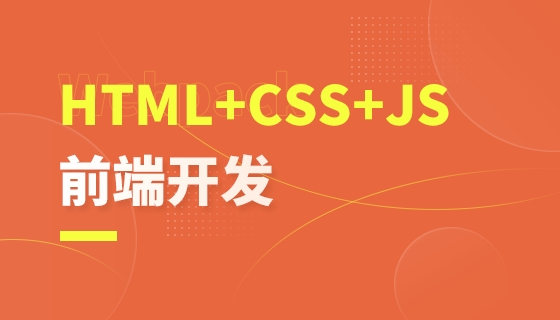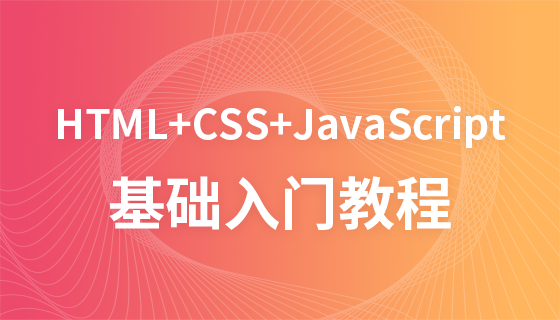
本文旨在讲解如何在 Golang 的单向链表中正确删除节点。通过分析常见的错误做法,深入理解指针的特性,并提供两种可行的删除节点方案,包括针对头节点的特殊处理和利用双重指针的通用方法,帮助开发者掌握链表操作的关键技巧。
在 Golang 中操作链表,特别是删除节点,涉及到对指针的深刻理解。初学者容易犯一些常见的错误,导致删除操作无法生效,或者引发编译错误。本文将深入探讨这些问题,并提供两种有效的解决方案。
在尝试删除链表中的节点时,一个常见的错误是直接将传入的节点指针设置为 nil。例如:
func (l *LinkedList) Delete(n *Node) {
if n.next == nil {
n = nil // 错误的做法
} else {
// ...
}
}这段代码的问题在于,函数接收的是节点指针 n 的一个副本。在函数内部将 n 设置为 nil,只会影响函数内部的局部变量 n,而不会改变链表中实际的节点指针。因此,链表结构不会发生任何变化。
立即学习“go语言免费学习笔记(深入)”;
编译错误 cannot use nil as type Node in assignment 是因为 *n = nil 尝试将 nil 赋值给一个 Node 类型的值,而不是 *Node 指针类型。这是类型不匹配导致的错误。
删除链表节点的关键在于修改前一个节点的 next 指针,使其指向被删除节点的下一个节点。以下提供两种实现方式:
这种方法首先检查要删除的节点是否是头节点。如果是,则直接更新链表的 head 指针。否则,遍历链表找到要删除节点的前一个节点,并修改其 next 指针。
func (l *LinkedList) Delete(n *Node) {
// 如果要删除的是头节点,直接更新 head 指针
if l.head == n {
l.head = n.next
return
}
// 找到要删除节点的前一个节点
current := l.head
for current != nil && current.next != n {
current = current.next
}
// 修改前一个节点的 next 指针
if current != nil {
current.next = n.next
}
}示例代码:
package main
import "fmt"
type Node struct {
Value int
Next *Node
}
type LinkedList struct {
Head *Node
}
func (l *LinkedList) Insert(value int) {
newNode := &Node{Value: value, Next: l.Head}
l.Head = newNode
}
func (l *LinkedList) Delete(n *Node) {
if l.Head == n {
l.Head = n.Next
return
}
current := l.Head
for current != nil && current.Next != n {
current = current.Next
}
if current != nil {
current.Next = n.Next
}
}
func (l *LinkedList) PrintList() {
current := l.Head
for current != nil {
fmt.Printf("%d -> ", current.Value)
current = current.Next
}
fmt.Println("nil")
}
func main() {
list := LinkedList{}
list.Insert(3)
list.Insert(2)
list.Insert(1)
fmt.Println("Original List:")
list.PrintList() // Output: 1 -> 2 -> 3 -> nil
// Delete node with value 2
nodeToDelete := list.Head.Next
list.Delete(nodeToDelete)
fmt.Println("List after deleting node with value 2:")
list.PrintList() // Output: 1 -> 3 -> nil
// Delete head node
list.Delete(list.Head)
fmt.Println("List after deleting head node:")
list.PrintList() // Output: 3 -> nil
}这种方法利用 Golang 指针的特性,使用一个指向指针的指针来间接访问和修改链表节点的 next 指针。这样可以避免对头节点进行特殊处理,使代码更简洁。
func (l *LinkedList) Delete(n *Node) {
// 初始化 indirect 为 head 指针的地址
indirect := &(l.Head)
// 循环直到 indirect 指向要删除的节点
for *indirect != n {
// 检查是否到达链表末尾
if (*indirect).Next == nil {
// 要删除的节点不在链表中
return
}
// 将 indirect 指向下一个节点的 next 指针的地址
indirect = &((*indirect).Next)
}
// 修改 indirect 指向的指针,跳过要删除的节点
*indirect = n.Next
}示例代码:
package main
import "fmt"
type Node struct {
Value int
Next *Node
}
type LinkedList struct {
Head *Node
}
func (l *LinkedList) Insert(value int) {
newNode := &Node{Value: value, Next: l.Head}
l.Head = newNode
}
func (l *LinkedList) Delete(n *Node) {
indirect := &(l.Head)
for *indirect != n {
if (*indirect).Next == nil {
return
}
indirect = &((*indirect).Next)
}
*indirect = n.Next
}
func (l *LinkedList) PrintList() {
current := l.Head
for current != nil {
fmt.Printf("%d -> ", current.Value)
current = current.Next
}
fmt.Println("nil")
}
func main() {
list := LinkedList{}
list.Insert(3)
list.Insert(2)
list.Insert(1)
fmt.Println("Original List:")
list.PrintList()
// Delete node with value 2
nodeToDelete := list.Head.Next
list.Delete(nodeToDelete)
fmt.Println("List after deleting node with value 2:")
list.PrintList()
// Delete head node
list.Delete(list.Head)
fmt.Println("List after deleting head node:")
list.PrintList()
}理解 Golang 指针的本质是掌握链表操作的关键。通过理解指针的传递方式和间接访问的原理,可以编写出高效、健壮的链表操作代码。选择哪种删除节点的方法取决于具体的需求和个人偏好。针对头节点的特殊处理方法可能更容易理解,而使用双重指针的方法则更简洁通用。
以上就是Golang 链表中删除节点:正确方法与指针理解的详细内容,更多请关注php中文网其它相关文章!

每个人都需要一台速度更快、更稳定的 PC。随着时间的推移,垃圾文件、旧注册表数据和不必要的后台进程会占用资源并降低性能。幸运的是,许多工具可以让 Windows 保持平稳运行。




Copyright 2014-2025 https://www.php.cn/ All Rights Reserved | php.cn | 湘ICP备2023035733号